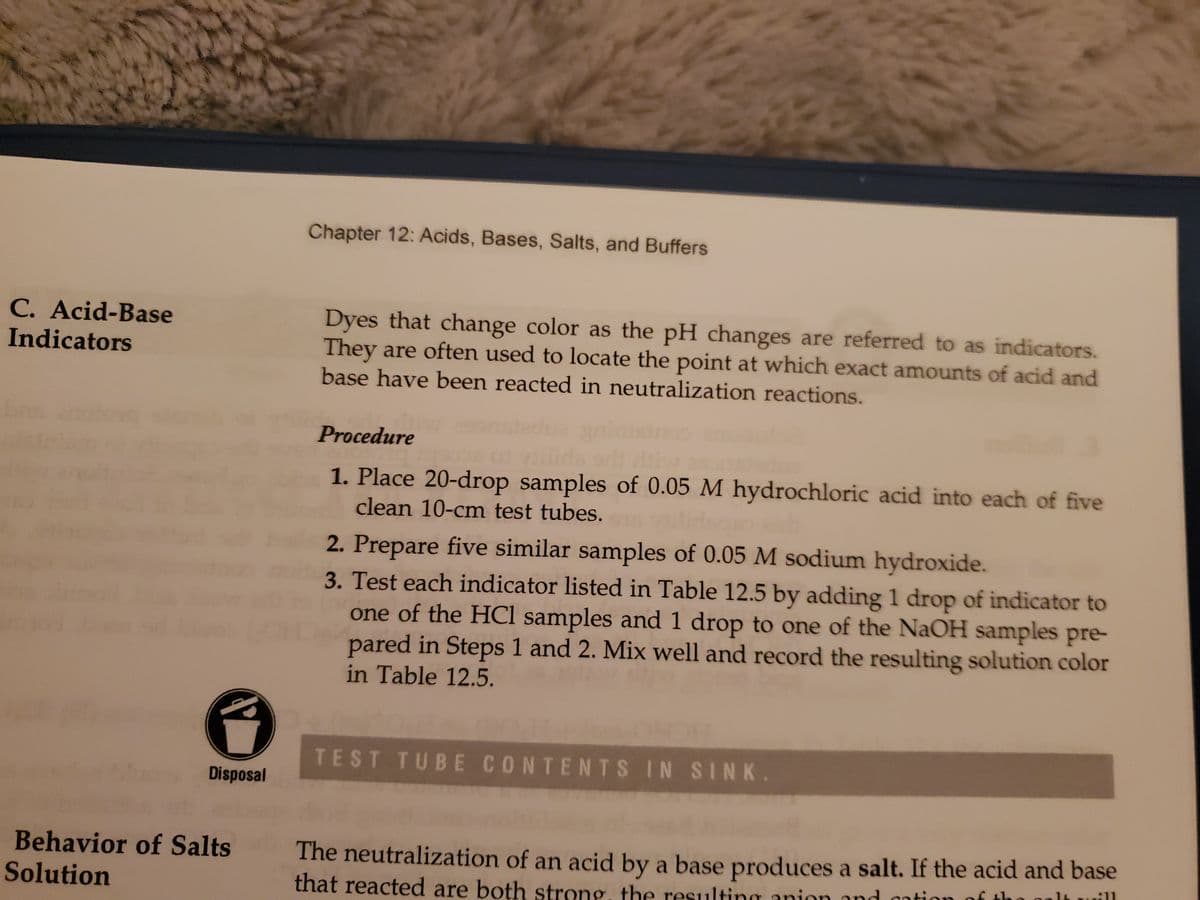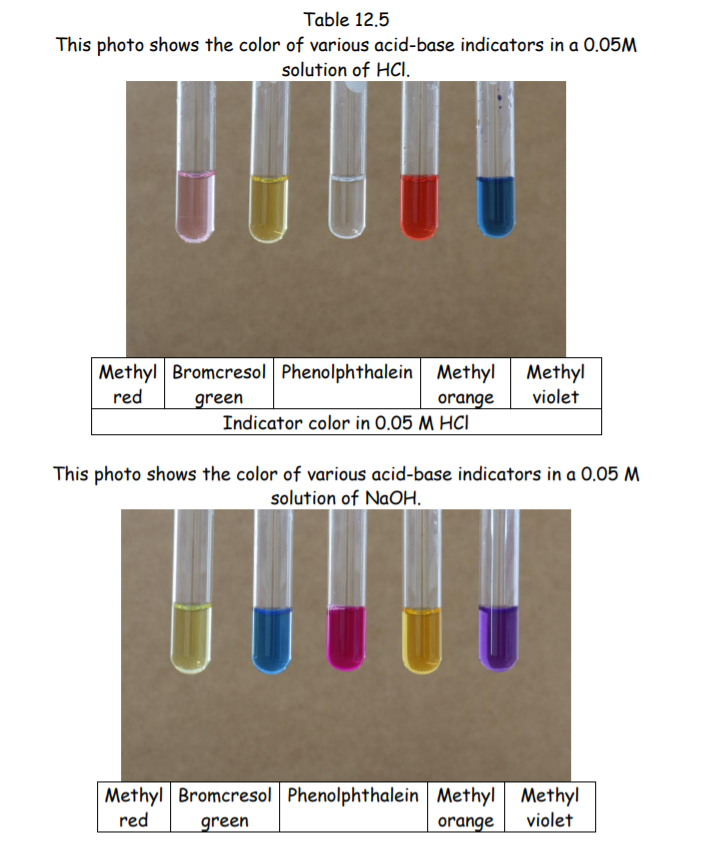7. In part C of the experiment, you are told to dispose of the used chemicals by pouring them into the sink. Consider the reaction that is possible between the used chemicals. What compound different from those in the used chemicals will be in the drain water as a result of this disposal? a. HCl b. NaOH c. NaCl
7. In part C of the experiment, you are told to dispose of the used chemicals by pouring them into the sink. Consider the reaction that is possible between the used chemicals. What compound different from those in the used chemicals will be in the drain water as a result of this disposal? a. HCl b. NaOH c. NaCl
Chapter15: Acid-base Equilibria
Section: Chapter Questions
Problem 9RQ: What is an acidbase indicator? Define the equivalence (stoichiometric) point and the end point of a...
Related questions
Question
100%
7. In part C of the experiment, you are told to dispose of the used chemicals by pouring them into the sink. Consider the reaction that is possible between the used chemicals. What compound different from those in the used chemicals will be in the drain water as a result of this disposal?
a. HCl
b. NaOH
c. NaCl

Transcribed Image Text:Chapter 12: Acids, Bases, Salts, and Buffers
C. Acid-Base
Indicators
Dyes that change color as the pH changes are referred to as indicators.
They are often used to locate the point at which exact amounts of acid and
base have been reacted in neutralization reactions.
Procedure
1. Place 20-drop samples of 0.05 M hydrochloric acid into each of five
clean 10-cm test tubes.
2. Prepare five similar samples of 0.05 M sodium hydroxide.
3. Test each indicator listed in Table 12.5 by adding 1 drop of indicator to
one of the HCl samples and 1 drop to one of the NaOH samples pre-
pared in Steps 1 and 2. Mix well and record the resulting solution color
in Table 12.5.
TEST TUBE CONTENTS IN SINK.
Disposal
Behavior of Salts
Solution
The neutralization of an acid by a base produces a salt. If the acid and base
the o
that reacted are both strong, the resulting anion and ontion of tl

Transcribed Image Text:Table 12.5
This photo shows the color of various acid-base indicators in a 0.05M
solution of HCl.
Methyl Bromcresol Phenolphthalein Methyl
red
Methyl
violet
green
Indicator color in 0.05 M HCI
orange
This photo shows the color of various acid-base indicators in a 0.05 M
solution of NaOH.
Methyl Bromcresol Phenolphthalein Methyl Methyl
red
green
orange
violet
Expert Solution
This question has been solved!
Explore an expertly crafted, step-by-step solution for a thorough understanding of key concepts.
This is a popular solution!
Trending now
This is a popular solution!
Step by step
Solved in 3 steps

Knowledge Booster
Learn more about
Need a deep-dive on the concept behind this application? Look no further. Learn more about this topic, chemistry and related others by exploring similar questions and additional content below.Recommended textbooks for you


Chemistry: An Atoms First Approach
Chemistry
ISBN:
9781305079243
Author:
Steven S. Zumdahl, Susan A. Zumdahl
Publisher:
Cengage Learning

Chemistry
Chemistry
ISBN:
9781305957404
Author:
Steven S. Zumdahl, Susan A. Zumdahl, Donald J. DeCoste
Publisher:
Cengage Learning


Chemistry: An Atoms First Approach
Chemistry
ISBN:
9781305079243
Author:
Steven S. Zumdahl, Susan A. Zumdahl
Publisher:
Cengage Learning

Chemistry
Chemistry
ISBN:
9781305957404
Author:
Steven S. Zumdahl, Susan A. Zumdahl, Donald J. DeCoste
Publisher:
Cengage Learning


Chemistry: Principles and Practice
Chemistry
ISBN:
9780534420123
Author:
Daniel L. Reger, Scott R. Goode, David W. Ball, Edward Mercer
Publisher:
Cengage Learning

Chemical Principles in the Laboratory
Chemistry
ISBN:
9781305264434
Author:
Emil Slowinski, Wayne C. Wolsey, Robert Rossi
Publisher:
Brooks Cole